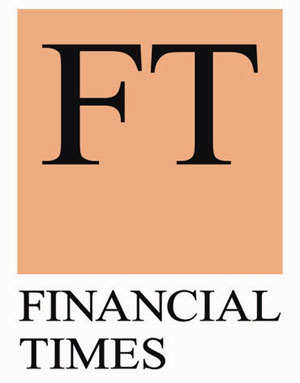Brussels is set to ease financial reforms so that big European banks are not forced automatically to split lending operations from risky trading.
In a draft European Commission proposal, seen by the Financial Times, the separation is no longer mandatory, would be less costly and restrictive than first envisaged and national supervisors are given wide discretion in applying the reforms.
In a further twist, the commission adds its own “narrowly defined” version of the US Volcker rule, which outlaws proprietary trading. The ban applies to around 30 big banks, regardless of whether their deposit-taking part is fenced off.
The proposals stem from the 2012 Liikanen report on the structure of banking. They are the finale to a welter of EU reform since the 2008 financial crisis, which has raised capital standards, introduced the first common rules to wind up failed lenders and launched a eurozone-based banking union.
While deliberations on Liikanen are continuing within the commission, early drafts suggest Michel Barnier, the EU commissioner responsible, is opting for a middle way between international attempts to make bank structures safer and less complex to wind up.
Mr Barnier’s proposal is expected to be published in late January or February – shortly before the European parliament breaks for elections. No agreement on the law is expected before December 2015, meaning it will become the responsibility of Mr Barnier’s successor.
The blueprint has emerged from a difficult 15-month Brussels effort to draw up a law to implement the review led by Erkki Liikanen, a Finnish central banker, whose most contentious findings were resisted by France, Germany and a host of European banks.
Like recent reforms pursued in France and Germany, it allows a bank’s supervisor to decide whether certain trading poses a “systemic risk” that should be separated. This judgment would be based on “metrics” designed by the European Banking Authority.
Supervisors will be empowered to force activities such as including market-making and buying and selling derivatives to be placed in a separately capitalised entity. The potential inclusion of market-making is highly contentious and goes further than reforms planned by Paris and Berlin.
But after such a split, the deposit-taking bank would still be allowed to sell standardised derivatives for hedging risk to insurance groups, non-financial companies and pension funds – within an exposure limit that Brussels would be empowered to set.
Supervisors would have the option to demand tougher standards. Alternative models for separation such as the UK Vickers reforms, which safeguard high-street banking and other “core” banking operations, would be permitted subject to Brussels approval.
The Brussels timeline envisages the proprietary trading ban applying from 2018 and the separation of some banks from 2020. This means that the decision on separation for most affected banks will be taken by the European Central Bank, which this year becomes the eurozone’s top bank supervisor.
The “Barnier rule” on proprietary trading prohibits activities for “the sole purpose of making a profit for own account without actual or anticipated client activity” – a narrow definition that goes beyond existing curbs planned in Europe.
Mr Barnier sees the reforms as necessary but tailored to avoid damage to the financing of the real economy and capital markets. But the revisions to Liikanen will be controversial. Sven Giegold, a German Green MEP pressing for structural reforms, said the rules “risk having no real effect on the banking sector apart from adding bureaucracy”.
“It looks like a purely symbolic political act,” he said.
Potential exemptions will be a relief to industry. Thousands of EU small banks are exempt from any separation requirements or the prohibition on proprietary trading. EU sovereign debt trading remains untouched. Supervisors are also permitted to shield big mutuals, and co-operative and savings banks. These include Crédit Agricole and Group BPCE of France, and Germany’s DeKa and DZ Bank.
The Liikanen report, by contrast, said its recommendations must “apply to all banks regardless of business model, including the mutual and co-operative banks, to respect the diversity of the European banking system.”

